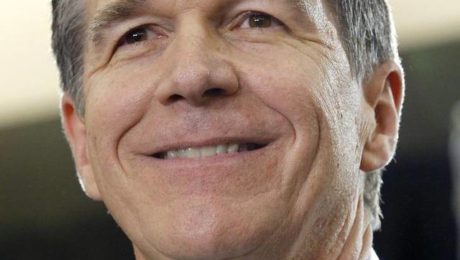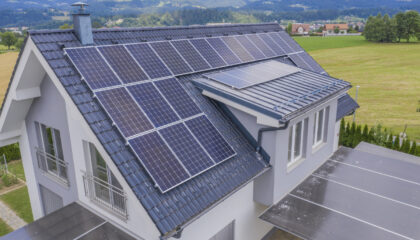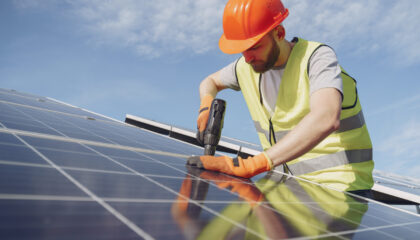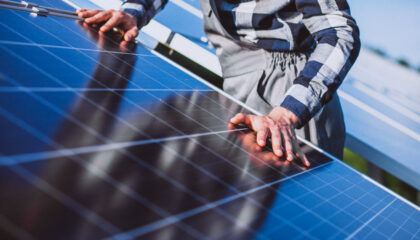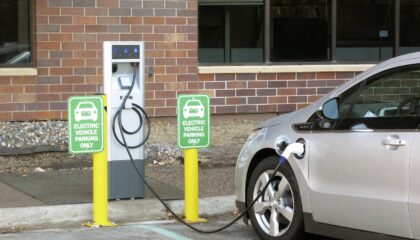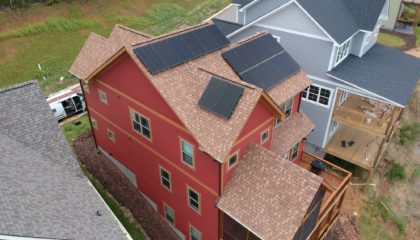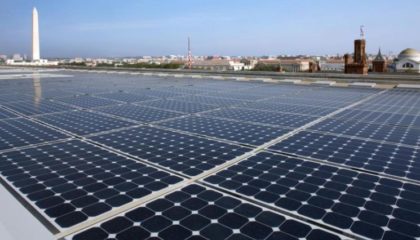Teens Use Courts to Stop Climate Change
An organization based in Oregon called Our Children’s Trust supports minors using judicial and legislative systems to stop climate change. One such teen lives in North Carolina.
Hallie Turner, along with NC teens Emily Liu and Arya Pontula, is in the midst of her second petition to the NC Department of Environmental Quality and the Environmental Management Commission. The petition consists of a rule requiring a decrease in greenhouse gases in the next 30 years until the state is producing no carbon dioxide emissions.
Four years ago, Turner attempted to petition the Commission to create a rule requiring NC to decrease carbon dioxide emissions by 4% each year. She went to court over it when the Commission rejected the petition. Unfortunately, she lost the case.
The Bigger Picture
Our Children’s Trust is involved in a federal case called Juliana v. U.S. where several youths are suing the federal government about the violation of the rights to life, liberty, and property through legislation leading to climate change. A magistrate judge and a district judge have agreed that the case should be tried after the federal government made a motion to dismiss the case. In February 2018, the trial will begin.
Slow But Steady Wins the Race
Such a process is a slow one. The teens involved in the Juliana v. U.S. case began their lawsuit in 2015. Turner’s 2015 case against the Commission lasted almost a year just to determine if the Commission rightly rejected Turner’s petition. However, Turner’s second petition illustrates the minors involved in Our Children’s Trust are more than willing to use the judicial process to create change.
Turner’s petition is more extreme this time around. Perhaps the feelings of the Environmental Management Commission changed in two years. If not, these plucky teens generate publicity about environmental issues affecting their future.
- Published in Climate Change
Energy Consumers Can Help Save the Earth Too
California began a program using the app OhmConnect. The app notifies residents signed up for the program when to turn off and unplug everything consuming energy. Not only are residents helping grid operators manage a grid becoming more and more reliant on renewables, they get paid for it.
Why?
Most of the strategies for lowering fossil fuel use consist of replacing fossil fuels with another energy source. However, solutions also lie with consumers of energy. Lowering consumption decreases the amount of energy required of the energy plants.
Transferring a grid from fossil fuels to renewables lowers the reliability of the baseload. The baseload is the minimum amount of energy a power plant generates to provide for their customers. It is easy to maintain a baseload with fossil fuels. Just burn however much the area needs, increasing the amount of coal, natural gas, or petroleum consumed in times of greater demand like the evenings when people are coming home, turning on lights, and making dinner.
Dealing with baseload with a largely renewable grid can be managed in several different ways. One of the best ways is diversifying the grid with solar, wind, hydro, and other energy sources. The creation of the storage battery has also been a help, allowing energy to be produced and stored until needed rather than put on the grid constantly. Importing energy from another area could even be an answer. Finally, baseload problems could be solved by… lowering the baseload which is achieved by lowering consumption.
The best solution is using all tactics. A carbon-free grid will not come from one answer but from several.
How Does This Apply to NC?
North Carolina comes in second to California for solar energy production. As California proves a carbon-free grid is feasible, others will follow suit, and North Carolina could be prepared to follow in its footsteps.
Even with fossil fuels, there are limits to how much power plants can produce. Duke Energy already has a program in place for customers to get bill credits if they sign up for a program to not use their air conditioning during peak consumption times. It is not nearly as in depth as the Californian program is. However, Duke Energy’s program is based in the same principle. Customers can help save the Earth too.
- Published in Solar Energy
States, Cities, and Organizations Pick Up Environmental Slack Left by Federal Government
As many know, this summer, President Trump announced that America would be pulling out of the Paris Accord. This caused quite the uproar, and in the months following the announcement, states and cities have made plans to achieve the Paris Accord’s goals.
What’s Been Done
Washington, New York, and California led efforts to create the U.S. Climate Alliance, a bipartisan coalition of state legislators and mayors in response to America’s. America’s Pledge, a group of states, cities, businesses, and universities, and We Are Still In, a declaration of supporting climate action, were also created to include private sector groups in the effort to combat climate change.
North Carolina joined the U.S. Climate Alliance and the We Are Still In campaign. Each state agreed to help make the goal of lowering emissions 26-28% of 2005 levels. States forming the Climate Alliance will probably reach that goal on an individual basis. However, America is on track to reduce emissions by only 15% by 2020 if federal emissions policy is rolled back as predicted.
Challenges
As uplifting as it is to see states, cities, and organizations come together to protect Earth, there are some downsides to not having the federal government participating in environmental policy. Significant amounts of research and development have been funded and supported by past federal initiatives. There are also possible strategies to lowering emissions no longer available because federal policies are necessary to achieve them. For instance, a national grid would mean that extra solar generated in California on a sunny day could be sent to a rainy Washington. Such a strategy could help make America’s electricity completely renewable, but a completely national grid could not exist without federal policy assisting states.
Though the U.S. Climate Alliance and America’s Pledge may not be able to do everything the entire federal government could do, such groups make sure that there are still parties invested in fighting climate change. Such interest will keep innovation alive, and progress will continue. By the time 2020 rolls around, who knows how many parties, private and public, will have recommitted to the Paris Accord. It may turn out federal involvement is not a necessity at all.
- Published in Solar News
Solar Creating Universal Energy Access
Solar helps areas all over the world acquire energy for the first time. Microgrids could enable the 1.2 billion people without access to a grid to produce electricity. They will help achieve the universal energy access goal of providing 195 million more people with energy by 2030.
What It Looks Like Now
Most of the off-grid areas are in Africa and East Asia. There is a push to provide universal energy through an expansion of transmission and a variety of production methods. Many communities in sub-Saharan Africa cannot be connected to the gird, so renewables are the answer. With political goals and market growth aligning, off-grid energy is more feasible than ever.
More than 30 percent of off-grid Kenyans use solar. Some financing programs hope to help solar reach 70 percent of Uganda’s rural population. Asia is quickly following suit. In many instances, these solar systems just provide light and phone charging capabilities, but production is expanding to include fans and TVs.
For some countries, solar is even improving a tourism market. Ecotourists look for the pristine wilderness in the countries utilizing off-grid solar. Safari lodges use more energy than the communities using off-grid solar because the clientele using them are usually from areas with stable energy sources and expect phone charging capabilities, lights, and even refrigerators, washing machines, and air conditioning or heat.
What It Could Mean
Eventually, with solar, communities will have access to services only available with energy like internet and quality of life will improve. The situation improves environmentally as well. Off-grid communities do produce some pollution. It is not anywhere near the scale of developed countries like America or Europe or developing countries like China. However, off-grid communities do burn wood, releasing carbon dioxide. Some wealthier communities even use diesel generators. If these methods of light and heat generation could be replaced with solar, that would be 1.2 billion people’s energy being produced by solar instead of diesel or wood.
- Published in Solar Energy, Uncategorized
Solar Arrays Give Homeowners a Boost in the Housing Market
Solar arrays are an investment. Those who choose to invest make their money back. Those lucky enough to live in areas with high solar rebates and incentives will make back that money quicker and maybe even  come out with a profit.
come out with a profit.
The value of solar panels go beyond rebates and tax cuts though. Homeowners who installed solar panels sold their homes for an extra $15,000 dollars because of photovoltaics on their roof. Berkeley Lab ran the study about the sale of homes with photovoltaics because realtors will have to able to price solar arrays accurately as the become more common.
Not only do houses with solar panels sell for more, but they sell faster. Low energy bills and positive environmental impact are a big plus for many potential buyers.
But Keep in Mind…
Different aspects may affect the amount of money solar panels add to the home. The age of the system and the roof can lower the benefit. The surrounding area may make a positive or negative impact. If the homes around are middle-class or lower, many of those buyers will not want to shell out extra for solar. The appearance of the home may also limit the amount of money the panels are worth to a potential buyer. If panels are on the front of the house, it may be considered ugly (though we certainly do not think so!).
The extra $15,000 applies to owned solar arrays. Homeowners should keep leases, loans, and warranties in mind while trying to sell. Leases can be transferred, but the buyer must agree to take on those payments. Loans have to be paid, and warranties may or may not be transferable to a second homeowner.
Other than reducing carbon footprints and helping society make steps to a cleaner world, solar panels can give homeowners a little kickback for their investment even when they need to leave it behind for opportunities else where.
- Published in Tips and Tricks, Uncategorized
Solar Innovations to Change the Game
New solar innovations pop up in the growing industry on a regular basis. Sometimes, innovations just improve efficiency by fractions of a percent, quietly helping in the climb toward higher efficiency.
However, several new findings put higher efficiency on the horizon of solar panels with flashy recreations. Today, according to Energy Sage, the best solar panels convert about 22% of absorbed sunlight into energy and cost $2.87 to $3.85 per watt.
Silicon Replacement
Agency of Science Technology and Research created a compound to replace silicon. In the average solar panel, silicon converts sunlight to energy. Before now, the only possible replacement was toxic Tulluride. The compound, called CZTS, an acronym for copper-zinc-tin-sulfide could change the game of solar panels with 30% efficiency.
Korean scientists also discovered a possible replacement. Perovskite is an element that can convert sunlight to energy, but it is very unstable. Scientists added flourine to protect the perovskite layer from moisture which causes it to degrade. The panels are not perfect yet, but perovskite is more efficient than silicone. They may be the panels of the future.
Transparent Solar Panels
With new transparent solar panels, solar energy may be produced where it could not be before. Unlike the familiar silicon panels seen on roofs, these panels only absorb invisible light. On the bright side these panels can be put on any windows, smart phone screens, or any clear surface. If solar panels covered all the glass in America, these transparent panels double the potential energy solar could offer, making up almost 80% of the national energy demand.
Better Batteries
Scientists work to improve storage batteries as well as panels. Storage batteries moved the solar industry into new territory of microgrids, an innovation themselves. Storage batteries are lithium batteries. Scientists at Berkeley found materials store Lithium in ordered and disordered fashions. Currently, batteries are made with materials that order lithium and other materials in neat layers. However, disordered organization stores more lithium. Scientists identified a criterion to use in predicting how materials will organize lithium. They also found adding flourine increases storage, stability, and fire safety.
It Takes Time
As exciting as these innovations are, they won’t make a splash immediately. New ideas often cost more. Solar roadways hit the market last December. However, the first project sold for $5.2 million for a kilometer length road. Like the very first solar panels, cost is not always effective, but with time and even more innovation, these great tools will be available for the average homeowner or community.
The cost of solar panels continues to fall, and hopefully, CZTS, transparent solar panels, and even solar roads follow the same trajection. A future is possible where solar is a part of what we drive on or in, our windows, and even our touch screens. It just requires more innovation.
- Published in Solar Technology



